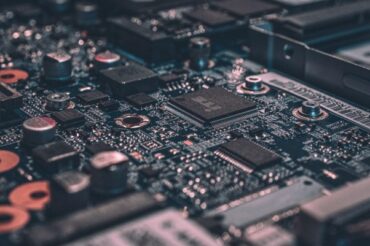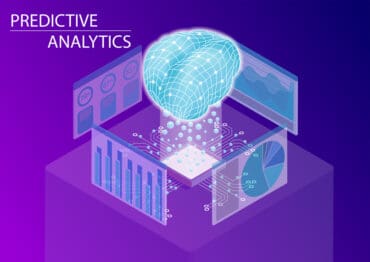
Continuous intelligence analytics solutions are platforms that ingest streaming data, perform analytics, and embed code, machine learning models, and rules to enable the real-time enterprise.
Continuous intelligence takes real-time analytics to new levels. It makes use of predictive analytics, artificial intelligence (AI), and machine learning (ML) on streaming data to get insights into events as they are happening. The upshot: Continuous intelligence requires new thinking about infrastructure architectures (IAs).
Businesses need to update their infrastructure architectures to accommodate data in motion to support continuous intelligence. Additionally, an infrastructure must be flexible to support different policies on data. Do you want to save everything that comes through? Or just save state changes? Note that there might be regulations that mandate you must store everything ever generated. Do you want to send all data to a central place (on-premises or in the cloud) or process data at the edge and only send the derived intelligence?
Making Optimal Use of Real-Time Data
Traditional processing involves running analytical queries against historical data. Continuous intelligence analyzes real-time data to make decisions in seconds to minutes based on situational awareness.
See also: What Is Continuous Intelligence?
Continuous intelligence uses flows of data from streaming sources, such as the Internet of Things (IoT), mobile devices, sensors, clickstreams, and transactions. Such data sources have, to date, remained largely unused. Continuous intelligence offers businesses a way to unlock this data to optimize decision making.
In particular, continuous intelligence analytics solutions identify perishable insights—insights that enterprises must act on within a given time frame or else the opportunity to change the course of business outcomes will pass. The value of such solutions does not stop there, though. They also offer continuous integration, orchestration of business processes, and embedded execution of code—all driven by streaming data from a multitude of data sources.
As a result, continuous intelligence analytics solutions are platforms that are not just about ingesting streaming data and performing analytics. They are also execution platforms that can embed code, machine learning models, and rules that data scientists can use to enable the real-time enterprise by detecting urgent situations and acting immediately.
What’s needed to enable such functionality and flexibility is an infrastructure that allows businesses to:
- Continuously analyze data in motion across multiple sources to deliver actionable insights
- Connect to any data stream to make predictions and discoveries as data arrives to enhance and improve analytic models and cognitive systems
- Deploy a complete set of streaming analytics—such as natural language processing, geospatial, predictive, and more—to satisfy unique, industry-specific requirements and use cases
To support this fundamentally different approach to analysis, the selected infrastructure architecture must support a distributed runtime environment and include tools for developing continuous analytic applications.
Points to Consider that Will Influence IA Choices
When planning a continuous intelligence effort, businesses need to accommodate the different data sources that will be used. Any solution will need connectors to ingest and sense numerous application and IoT data sources in real time.
Continuous intelligence platforms must have an IA that easily integrates a plethora of analytical tools and machine learning models to detect patterns of events. The goal is to detect urgent situations to act upon automatically or provide information to real-time dashboards for human decision-makers.
Insights generated using continuous intelligence are immediate but not valuable unless they are used to take action. A suitably chosen IA will allow businesses to make use of this information promptly. An ideal solution would trigger processes in other applications. For example, an IoT predictive maintenance application may monitor temperature and vibration data streamed from a conveyor belt. The continuous intelligence solution could detect a spike in either temperature or vibration to indicate a possible breakdown. The solution could then push an alert to an operator or trigger an automatic shutdown of the machine.
Decisions on the Edge
Perhaps one of the most significant issues impacting infrastructure architecture is how to handle data at the edge. There are two fundamentally different approaches. Each has major IA implications.
One approach is to send all data to a central location, such as a data center or a cloud instance for analysis. There, the data can be analyzed using continuous intelligence AI or machine learning models. The results are then sent back down to the device or location so actions can be executed at the edge.
An example of this would be to send all IoT sensor data from devices on a machine floor to a data center server, and then run an AI predictive maintenance algorithm on that data. And if a potential failure is detected, automatically execute actions on the plant floor to shut down systems in an orderly manner so the part can be replaced. Such an approach is well-suited to situations where the edge device does not have the processing power to perform the analysis, or the link bandwidth is sufficient to support rapid streaming of the data from the edge.
The alternative approach would be to do the analysis at the edge, and then either send actionable insights to a dashboard where a human operator takes actions, or have the device itself execute some action.
An example of this method would be video analysis in an autonomous system (e.g., a robot moving along a plant floor or an auto driving down the highway). In this scenario, transmitting the video data to a central site for analysis would take too long for the robot or car to take the appropriate action.
These are just some of the IA issues that must be addressed when implementing a continuous intelligence effort.







